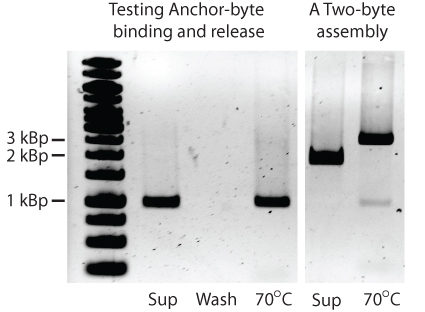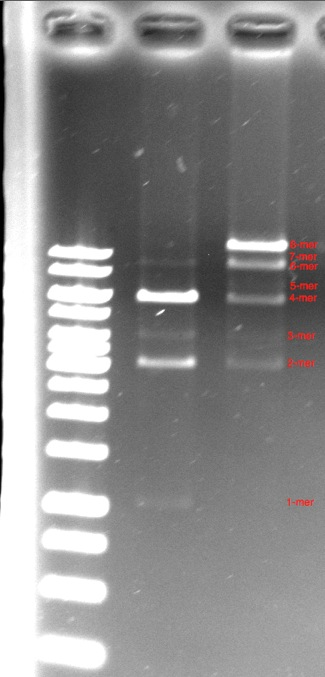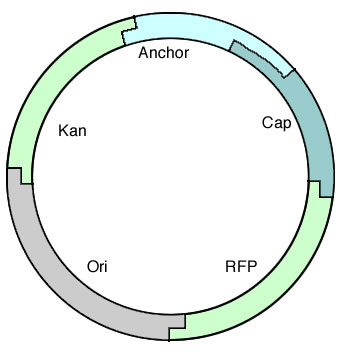Team:Alberta/Achievements/Overview
From 2010.igem.org
(→Transformation of E. coli with a Constructed Plasmid) |
|||
| Line 43: | Line 43: | ||
The octamer showed that we could create long constructs out of pieces of DNA so the next step was to construct a fully functional plasmid and test drive it in a cell. To do this we started with a short construct that contained all the required parts of a plasmid. This also allowed us to test out the parts we had made specifically for this. | The octamer showed that we could create long constructs out of pieces of DNA so the next step was to construct a fully functional plasmid and test drive it in a cell. To do this we started with a short construct that contained all the required parts of a plasmid. This also allowed us to test out the parts we had made specifically for this. | ||
</p> | </p> | ||
| - | + | [[Image:Alberta Tformplasmid.jpg|right]] | |
Revision as of 23:16, 26 October 2010
BioByte 2.0
The first major accomplishment of our project was to design the BioBytes 2.0 standard for parts and the assembly of those parts into useful transformable constructs. This was done very early on but was essential for the progression and success of the remainder of the project.
DNA Attachment
The next major step in the development of GENOMIKON was to successfully attach the BioByte 2.0 anchor to poly-T iron micro beads. This was demonstrated by attaching a 1KBp anchor-Kanamycin resistance ORF piece to the iron micro beads, then eluting it off of the beads.
As we can see all of the 1KBp anchor-KanR is removed in the initial elution and none remains attached to the beads in the subsequent wash step. this is also true of the two BioByte 2.0 construct seen on the right that is a 2KBp piece added to a 1KBp piece.
Octamer Construction
Our next major accomplishment was the assembly of a 12KBp construct made of 8 pieces of DNA using the BioByte 2.0 system. The octamer was assembled on an iron mirco bead starting with the anchor and adding alternating 1KBp pieces and a 2KBp pieces until the full 12KBp construct was achieved. This is seen in the third lane. A tetramer of the same construction is seen in the second lane.
It can be seen that the the major product of both the octamer and tetramer constructs was the complete construct. This was an exciting gel as the octamer was constructed in under 3 hours, a feat that would have taken more than a summer using the BioBrick method.
Transformation of E. coli with a Constructed Plasmid
The octamer showed that we could create long constructs out of pieces of DNA so the next step was to construct a fully functional plasmid and test drive it in a cell. To do this we started with a short construct that contained all the required parts of a plasmid. This also allowed us to test out the parts we had made specifically for this.
 "
"



